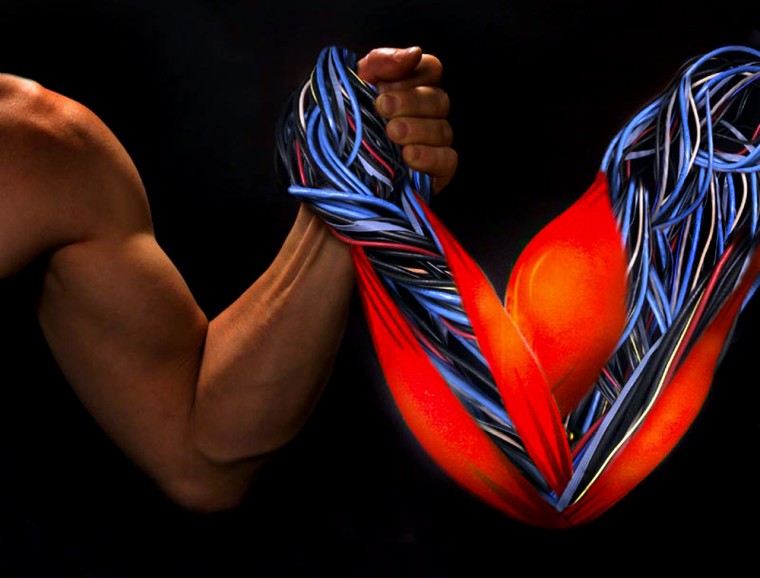Robots with oxygen-breathing muscles, aircraft that change the shape of their wings while in the air and other technical advances may be on the way, thanks to a new generation of artificial muscles. Scientists have designed the muscles to run on fuels rather than batteries or electricity from power cords.
The new study appears in Friday's issue of the journal Science, published by AAAS, the nonprofit science society.
While the artificial muscles don’t look like bulging biceps or well-defined quads, they are, nonetheless, like natural muscles in important ways: they run on a combination of oxygen and energy-rich fuels and are capable of doing work — such as lifting a metal weight up and down.
The new muscles may one day free people with prosthetic limbs from the troubles of restrictive power cords and the hassles of batteries with long, inconvenient recharging times, said Science author Ray Baughman from the University of Texas at Dallas in Richardson.
The two muscle designs may also find their way into a variety of other applications, including smart sensors that detect the environment and react accordingly and new surgical techniques.
Will alcohol make robots dance?
If you’ve been to a few weddings, you have probably seen that — with a little alcohol — people try out all kinds of unrestricted movements on the dance floor. The authors hope alcohol will make robots dance freely as well. The alcohol, however, would serve as a fuel that frees robots from stationary power sources and batteries instead of inhibitions.
In contrast, today’s most athletically capable robots “cannot freely prance around” because their high need for electrical power keeps them wired to a stationary power source, the scientists say.
“This research suggests a whole new way of making robots, motors or other devices in a much more distributed way. Instead of electric energy and wires hooked up to each motor, you have a circulation system carrying fuel to each engine,” said John Madden, the author of a related article in Science that further explains the new artificial muscle research.
Muscle made of wire
The fuel-powered artificial muscle closest to incorporation into commercial applications is a specially coated thin metal wire that contracts and shortens when heated and lengthens when cooled.
Wires that shorten and lengthen due to temperature changes are not new, but running such muscles with fuel and oxygen is new, the authors say.
And the trick to the fuel-powered wires is their coating. The scientists coated the outside of the wire with a platinum catalyst that helps with the production of water and heat from the fuel's oxygen and hydrogen.
The heat causes the wire to contract. The wire lengthens when cooled. To achieve lengthening through cooling, the scientists change the mix of oxygen and available hydrogen in order to slow or stop the chemical reaction that produces the heat and water.
In a video showing the methanol-powered wire muscle at work, the scientists show that contact between a mix of methanol fuel and air with the titanium-nickel wire spring covered in platinum catalyst causes the spring to contract and lift the weight.
Carbon tubes turn to muscle
In the second artificial muscle described by the scientists, electrical charge — rather than heat — changes the dimensions of the specialized muscle material, which is made of sheets of carbon rolled up into cylinders called carbon nanotubes. This dimension change allows the muscle to do work.
Oxygen dissolved in water transfers charge to the carbon nanotubes, with an assist from the platinum catalyst.
This injection of electric charge into the carbon nanotubes causes electrons in the muscle material to repel each other. As a result, the muscle material expands so the electrons can get away from each other. It is this expansion — and contraction when the charge is no longer injected — that allows the material to do work.
The carbon nanotube muscle material does three jobs at once: First, it converts chemical energy to electrical energy, and in this way it acts like a fuel cell. The material also stores electrical energy. Finally, it transforms electrical energy to the mechanical energy that leads to muscle contraction.
“These muscles won’t propel our cars yet, but they could operate the windows and door locks in fuel cell vehicles, or could serve as replaceable artificial muscles in lifelike robots,” Madden observed.
